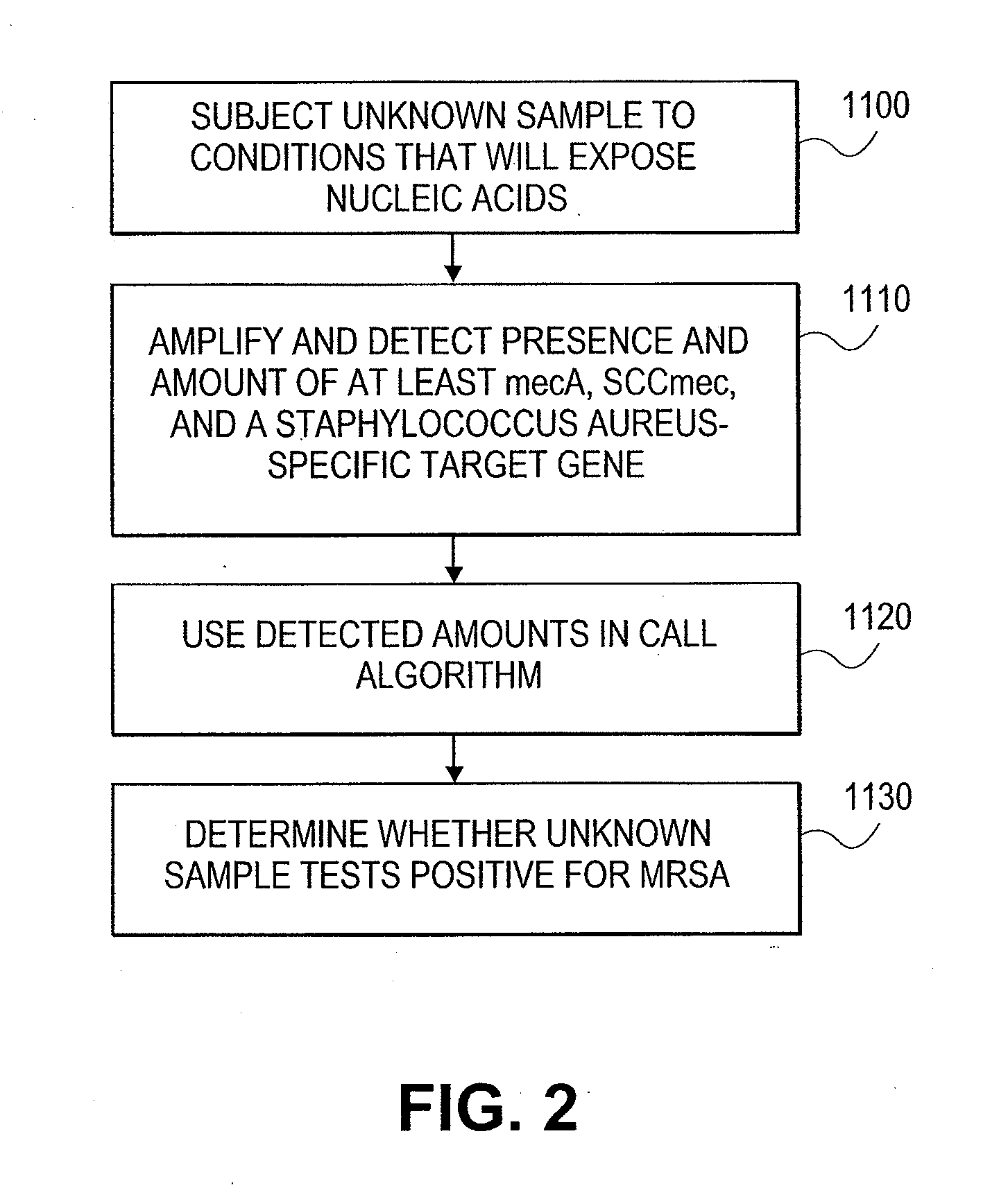Systems and methods for detecting the presence of a biological status using plot
a biological status and system technology, applied in the field of systems and methods for detecting the presence of biological status using plots, can solve the problems of limiting treatment options, affecting the detection of mrsa, and requiring more expensive and often more toxic treatment of mrsa infections
- Summary
- Abstract
- Description
- Claims
- Application Information
AI Technical Summary
Problems solved by technology
Method used
Image
Examples
example 1
Illustrative Example 1
[0066]659 samples were collected and analyzed to form a model that can be used according to one embodiment. The samples were known samples, i.e., it was known whether MRSA was present in each of the samples. Two swabs were collected for each sample. These two swabs were then cultured for MRSA independently. If the culture results from two swabs agree, this sample was considered valid.
[0067]Each valid known sample was then placed in a sample buffer tube with 1 ml of Tris, pH 8.0 and 1 mM EDTA, pH8.0. The sample buffer tube was vortexed for 40 seconds at 3000 rpm to dislodge bacteria from the swab head. 500 μL of the bacterial suspension (i.e., the sample buffer containing bacterial suspension) was then transferred into a new tube.
[0068]10 μL of Process Control Working Stock was then added to the new tubes. 10 μL of cell wall digesting enzyme was also added to the new tubes. After a brief vortex, the tubes were incubated at 70° C. for 5 minutes....
example 2
Illustrative Example 2
[0090]199 Nasal swabs were collected and stored in a Stuart transport medium. The swab heads were removed and each swab head was transferred into a 2 ml sample suspension tube with 1200 μL of Tris based sample buffer with 10 mM Tris pH 8.0 and 1 mM EDTA, pH 8.0˜100 mg of 1 mm Zirconia / Silica beads. The bacteria on the swab heads were dislodged by vortexing the sample tubes at speed of 3000 rpm for at least 15 seconds.
[0091]The swab heads were then sterilely removed from the sample tubes and transferred into 15 ml bacteria culture tubes with 1 ml of Trypic Soy broth (TSB) and 6.5% NaCl. The inoculated bacteria tubes were transferred into a 37° C. incubator and incubated overnight with shaking at speed of 200 rpm.
[0092]The presence or absence of Staphylococcus aureus and / or MRSA was then confirmed. 10 μL it of each of the overnight culture broths was streaked on BBL™ CHROMagar MRSA and a BBL™ CHROMagar Staphylococcus aureus plate. 500 μL of the ...
PUM
 Login to View More
Login to View More Abstract
Description
Claims
Application Information
 Login to View More
Login to View More - R&D
- Intellectual Property
- Life Sciences
- Materials
- Tech Scout
- Unparalleled Data Quality
- Higher Quality Content
- 60% Fewer Hallucinations
Browse by: Latest US Patents, China's latest patents, Technical Efficacy Thesaurus, Application Domain, Technology Topic, Popular Technical Reports.
© 2025 PatSnap. All rights reserved.Legal|Privacy policy|Modern Slavery Act Transparency Statement|Sitemap|About US| Contact US: help@patsnap.com



